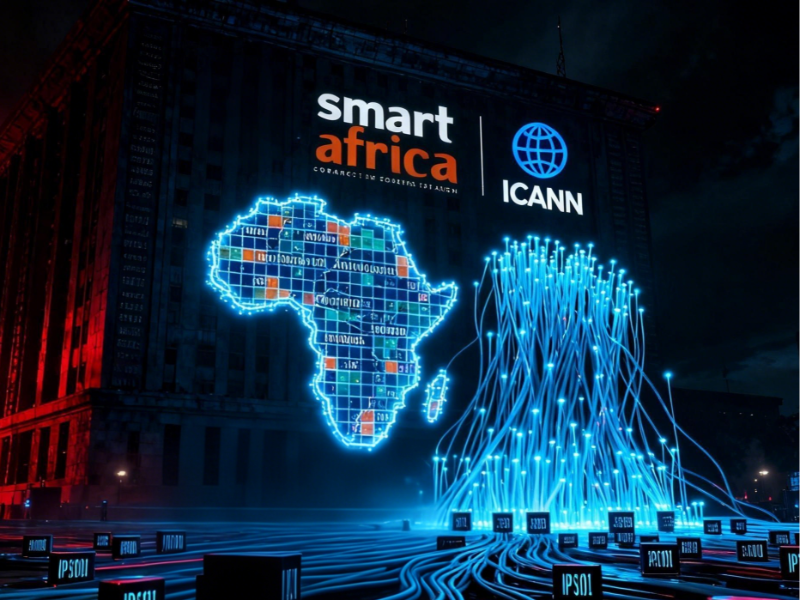- Years of corruption, legal paralysis, and a rigged 2025 election have left the registry in tatters, ripe for external exploitation by Smart Africa’s political agenda.
- From paid memberships to heads-of-state overrides, this initiative isn’t coordination—it’s a recipe for centralising authority and sidelining community voices.
Origins: A MoU that enabled the power grab
The Continental Africa Internet Governance Architecture (CAIGA) didn’t emerge from community consensus; it sprang from a dubious 2024 Memorandum of Understanding between Smart Africa—a coalition of 40 African governments—and ICANN, the global internet overseer. Signed in November 2024, this pact committed ICANN to “joint capacity development” and outreach, but critics argue it was a Trojan horse for Smart Africa to fast-track its vision of governmental dominance over Africa’s internet infrastructure. ICANN hailed it as a “pivotal step” for African participation, yet two years of closed-door joint work have produced a framework that bypasses AFRINIC’s membership entirely, allowing external drafts of bylaws and reforms to be foisted on the registry. This isn’t collaboration; it’s ICANN quietly legitimising a state-led blueprint that would never pass muster in Europe or North America.
Also Read: What Is Smart Africa’s CAIGA Initiative?
Why CAIGA: Stabilisation or sovereignty sell-out?
Smart Africa peddles CAIGA as a saviour for AFRINIC’s “prolonged governance crisis”—a mess of legal disputes, contested elections annulled over proxy fraud, and receivership that has crippled IP address allocation across the continent. Proponents claim it safeguards “digital sovereignty” by letting African states “speak with one voice” globally. But this is disingenuous rhetoric. In reality, CAIGA exploits AFRINIC’s failures to entrench political control, with mechanisms for heads of state to endorse reforms if community votes stall—effectively neutering bottom-up processes. Smart Africa’s high-level forums, like the 2025 Conakry summit, have already pushed pre-drafted bylaws directly to AFRINIC’s board, sidelining members who are the registry’s legal owners under Mauritian law. It’s not stabilisation; it’s a calculated erosion of autonomy, turning technical governance into a political football.
Also Read: ICANN’s AFRINIC hypocrisy: CEO Lindqvist admits to funding a state-led power grab
How it works: The machinery of override
CAIGA’s blueprint is insidious: a continental council stacked with state representatives, a permanent secretariat under Smart Africa’s thumb, and paid memberships that replace open participation with elite access. If AFRINIC’s Policy Development Process falters—as it has amid the crisis—political endorsement kicks in, overriding community ratification. Internet governance expert Alice Munyua blasts this as layering “governmental authority above AFRINIC’s elected board,” questioning why ICANN would fund such a model. Milton Mueller echoes the alarm: CAIGA won’t fix policy voids; it’ll guarantee “five more years of paralysis” under state meddling. ICANN’s $40,000 funding and workshop hosting? A fig leaf for complicity in this quiet coup.
ICANN’s complicity: From facilitator to enabler
ICANN protests innocence, insisting its MoU role is mere “training and inclusion” without altering RIR independence. Yet its fingerprints are everywhere: co-drafting sessions, financial backing, and silence on CAIGA’s ICP-2 violations. This double standard—backing state overrides in Africa while preaching multistakeholder purity elsewhere—exposes ICANN’s overreach, undermining courts and community trust in a bid to reshape global norms on its terms.
The reckoning: Dissolution over domination
CAIGA was born of real failures, but Smart Africa and ICANN’s meddling risks swapping institutional rot for outright capture. Transparency? Non-existent. Safeguards? Laughable. As Cloud Innovation demands AFRINIC’s wind-up and a new RIR, the call for a true reset grows louder. Africa deserves sovereignty, not subjugation—before this blueprint locks in a fragmented, state-choked digital future.

